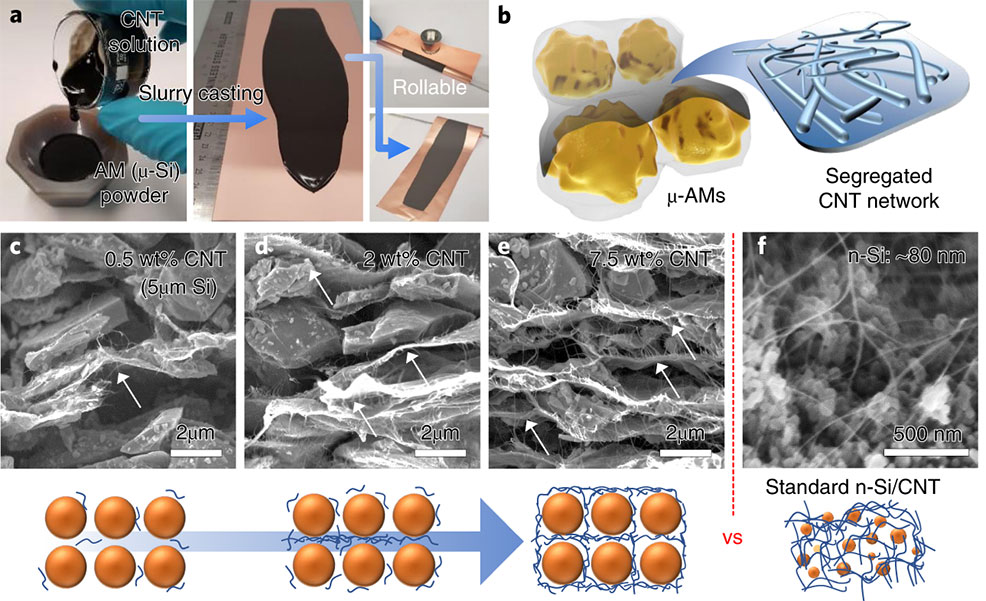
28th June 2019 Nokia reveals next-generation battery with 2.5 times longer life Researchers at Nokia Bell Labs and AMBER, the SFI Centre for Advanced Materials and BioEngineering Research hosted at Trinity College Dublin, have created a new, innovative formula for battery composition. This makes batteries far more powerful, packing 2.5 times the battery life of anything currently on the market. As the world transitions to 5G, a new "Internet of Things" has begun to emerge – everything from wearable technologies, to pervasive sensors, and smart industrial robots. The new battery design, presented in the journal Nature, has the potential to help power this increasingly connected world and its growing energy demands. The researchers developed thicker and more efficient battery electrodes using a composite of carbon nanotubes and lithium, enabling energy to be transferred at near-theoretical peak efficiency levels. As a result, the batteries charge quickly and maximise the potential for whatever volume they take up.
Credit: Sang-Hoon Park et al. / Nature
"By packing more energy into a smaller space, this new battery technology will have a profound impact on 5G and the entire networked world," said Paul King, one of the lead investigators on the project and Member of Technical Staff, Nokia Bell Labs. "The combination of Nokia Bell Labs' industry and device knowledge and AMBER's materials science expertise allowed us to tackle an extremely difficult problem involving multiple disciplines. Our results were achieved through the deeply collaborative mode in which we work, underscoring the value of engaging with AMBER as part of our global research strategy." "The significant advancement in battery technology outlined in this research is a testament to the strong collaboration between AMBER and Nokia Bell Labs. Bringing scientists together from industry and academia with a common research goal has resulted in a substantial scientific breakthrough," said Dr. Lorraine Byrne, AMBER Executive Director. "AMBER's partnership with Nokia Bell Labs through their Distinguished Academic Partners Program has been a hugely positive experience and clearly illustrates the benefits of industry-academic engagements. I look forward to AMBER's collaboration with Nokia Bell Labs continuing to break new boundaries in science creating impact for society." An additional benefit to this new technology is its potential to improve the performance of large-scale renewable energy grids. In the future, we will increasingly rely on storage technologies, such as the battery technology described here, to manage the high fluctuation in generation from solar and wind. A new study by Wood Mackenzie shows that storage requirements in 100% renewable systems will likely be 25 times higher than today's systems. This will pose issues as the need for efficient, fast charging and compact energy storage becomes even more imperative. There is no word yet on a commercial release date for Nokia Bell Labs and AMBER's new battery design, but a patent has been filed to protect this technology and help bring it to the marketplace.
Comments »
If you enjoyed this article, please consider sharing it:
|







